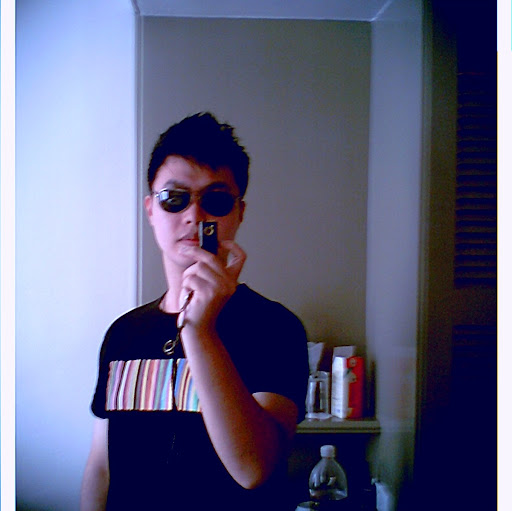Carl Lew Wong
age ~77
from Arcadia, CA
- Also known as:
-
- Carl L Wong
- Carl W Wong
- Phone and address:
-
1501 S 5Th Ave, Arcadia, CA 91006
6264871295
Carl Wong Phones & Addresses
- 1501 S 5Th Ave, Arcadia, CA 91006 • 6264871295
- 1814 7Th Ave, Arcadia, CA 91006 • 6268210612
- Los Angeles, CA
- Alhambra, CA
- Montebello, CA
- 1501 S 5Th Ave, Arcadia, CA 91006
Work
-
Position:Clerical/White Collar
Education
-
Degree:Graduate or professional degree
Us Patents
-
Systems And Methods For Promoting Medication Adherence
view source -
US Patent:20210244621, Aug 12, 2021
-
Filed:Apr 1, 2021
-
Appl. No.:17/220732
-
Inventors:- Pinole CA, US
Carl Wong - Cerritos CA, US
Albert Alaan - Redondo Beach CA, US
Taiki Nishihara - Berkeley CA, US
Harsh Raj Chauhan - Berkeley CA, US -
Assignee:Agape Assets, LLC - Pinole CA
-
International Classification:A61J 7/04
A61F 9/00 -
Abstract:A medication adherence device may include a unibody and a station. The unibody may include: a unibody housing configured to be removably coupled to a medicine container; an inertial measurement unit configured to record motion data describing the movement of the unibody, and therefore describing the movement of a medicine container that the unibody is coupled to; and a unibody data interface in communication with the inertial measurement unit. The station may include: a station data interface configured to receive motion data from the unibody data interface; and a station processing unit in communication with the station data interface, the station processing unit configured to generate medication access information using the motion data. Preferably, data and power may be communicated between the unibody and station when the unibody is positioned proximate to the station, such as by being positioned in a station cavity.
-
Systems And Methods For Promoting Medication Adherence
view source -
US Patent:20200155415, May 21, 2020
-
Filed:Jan 23, 2020
-
Appl. No.:16/750452
-
Inventors:- Pinole CA, US
Carl Wong - Cerritos CA, US
Albert Alaan - Redondo Beach CA, US
Harsh Raj Chauhan - Berkeley CA, US
Taiki Nishihara - Berkeley CA, US
Ryan Zolyomi - Santa Clara CA, US
Kian Talaei - Berkeley CA, US
Tianyi Xing - Berkeley CA, US
Fang-Jhen Su - Taichung City, TW -
Assignee:Agape Assets, LLC - Pinole CA
-
International Classification:A61J 7/04
A61F 9/00 -
Abstract:A system for promoting medication adherence is provided. The system may receive medical information and medication access information via a medication adherence device, the medication adherence device having a housing configured to be removably coupled to a medicine container. The information may be used to form one or more blind spots which representative of symptoms of glaucoma and which may be produced on the display screen of a patient's client device. The system may use Gamblification and/or Gamification in which a blind spot obscures portions of a game of chance program and/or novelty game type program, respectively, from being observed on the display screen. As medical information and medication compliance information is received, the number, size, opacity, and/or shape of the blind spots produced on the display screen of a patient's client device may change to provide actual perception of visual loss which spurs patients to compliance.
Name / Title
Company / Classification
Phones & Addresses
President
Eclat Development
19326 Bechard Ave, Artesia, CA 90703
CTO
Intax Software
Custom Computer Programming Services
Custom Computer Programming Services
1400 Bristol St N STE 220, Newport Beach, CA 92660
9495538001
9495538001
Podiatrist, Principal
Wong Carl
Podiatrist's Office
Podiatrist's Office
11633 San Vicente Blvd, Los Angeles, CA 90049
M
Infinio Online LLC
160 W Vly Blvd, San Gabriel, CA 91776
Owner
Beverly Hills Motorsport
Ret Hobbies/Toys/Games
Ret Hobbies/Toys/Games
165 S Robertson Blvd, Beverly Hills, CA 90211
PO Box 10716, Beverly Hills, CA 90213
3102739988
PO Box 10716, Beverly Hills, CA 90213
3102739988
President
BEVERLY HILLS MOTORSPORT, INC
1436 S Ln Cienega Blvd 208B, Los Angeles, CA 90035
1436 S Ln Cienega Blvd, Los Angeles, CA 90035
1436 S Ln Cienega Blvd, Los Angeles, CA 90035
Medicine Doctors

Carl L Wong, Los Angeles CA - LCSW
view sourceSpecialties:
Social Work
Clinical Social Work
Clinical Social Work
Address:
351 E Temple St, Los Angeles, CA 90012
2132532677 (Phone), 2132535149 (Fax)
2132532677 (Phone), 2132535149 (Fax)
Languages:
English

Carl Wong, Los Angeles CA - DPM (Doctor of Podiatric Medicine)
view sourceSpecialties:
Podiatry
Podiatry Sports Medicine
Podiatry Sports Medicine
Address:
11633 San Vicente Blvd Suite 214, Los Angeles, CA 90049
3108269894 (Fax)
3108269894 (Fax)
Languages:
English
Classmates

Carl Wong
view sourceSchools:
Machine & Metal Trades High School New York NY 1950-1954
Community:
Colleen Gardner, Armond Aiello, Vincent Barcia

Carl Wong
view sourceSchools:
Mayland Heights Elementary School Calgary Azores 1989-1994, Sir John Franklin School Calgary Azores 1994-1996

Carl Wong
view sourceSchools:
Machine & Metal Trades High School New York NY 1951-1955
Community:
Colleen Gardner, Armond Aiello, Vincent Barcia

Carl Wong
view sourceSchools:
Zhejiang University Hangzhou China 1995-1999
Community:
Lisa Chen, Liang Yang, Feng Feng, Dongwei Wang

Carl Wong
view sourceSchools:
La Salle Junior High School 17 New York NY 1949-1951, Machine & Metal Trades High School New York NY 1952-1955
Community:
Colleen Gardner, Armond Aiello, Vincent Barcia

Carl Wong
view sourceSchools:
Walnut High School Walnut CA 1994-1998
Community:
Vicki Buchanan, Shonna Schiffer

Machine & Metal Trade...
view sourceGraduates:
Carl Wong (1951-1955),
Reginal Lucas (1957-1961),
William Young (1942-1943),
James Mulligan (1953-1957),
Pasquale Cerniglia (1948-1952)
Reginal Lucas (1957-1961),
William Young (1942-1943),
James Mulligan (1953-1957),
Pasquale Cerniglia (1948-1952)

Mayland Heights Elementar...
view sourceGraduates:
Carl Wong (1989-1994),
Matthew Alexnader (1998-2002),
Jeannine Dryden (1986-1993),
Sheryl Poetker (1975-1979)
Matthew Alexnader (1998-2002),
Jeannine Dryden (1986-1993),
Sheryl Poetker (1975-1979)
Youtube
Flickr
Plaxo

Carl Wong
view sourceWaterloo, OntarioPast: Systems Analyst at Aviva Canada Inc.

Carl Wong
view sourceCerritos, CASenior Manager at CCH - Wolters Kluwer

Carl Wong
view sourceApplied Materials

Carl Joseph Wong
view source
Carl Andrew Wong
view source
Carl Nicole Wong
view source
Carl Earl Wong
view source
Carl Wong
view source
Carl Wong
view source
Carl Wong
view source
Carl Wong
view sourceMyspace
Googleplus

Carl Wong
Education:
Dalian University of Technology - Software engineer
Tagline:
Holy shit

Carl Wong

Carl Wong

Carl Wong

Carl Wong

Carl Wong

Carl Wong

Carl Wong
Get Report for Carl Lew Wong from Arcadia, CA, age ~77















